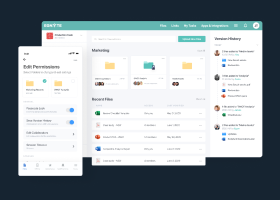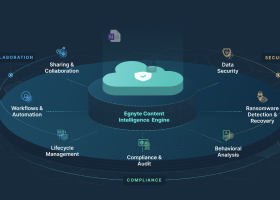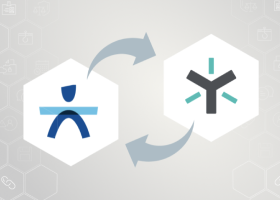Data Repository
A data repository is a broad term that refers to a location where a collection of data is stored. In some cases, it is a single storage device. In others, it could be a group of databases.

A data repository serves as a centralized place for disparate information to be held in an organized manner. This is critical, because if data is to be useful, it must be easily searchable and accessible.
What is a Data Repository?
Information stored in a data repository is a collection from different sources that is logically stored. As noted, this could be a single data set in one location or several data sets stored across multiple databases.
Typically, data collected in a data repository is the aggregation of information from existing databases that’s merged in a centralized location where it can be shared, analyzed, and updated by a group of users. By integrating data from multiple sources, a data repository can make it easier to secure data, as well as maintain data quality and data integrity.
Information stored in data repositories is collected from a number of sources, such as ERP, CRM, point-of-sale systems, spreadsheets, and other applications. The data is moved into a repository where it is cleaned, formatted, validated, and organized. Using a common data model for this disparate information makes it readily accessible for queries, analytics, dashboards, and reporting.
Creating a data repository, rather than accessing data sources directly, can enhance the following capabilities:
- Allow data to be restructured, with different tables and fields, to make it more accessible to users—without compromising source data.
- Eliminate impacts on operational systems’ performance when running reports or performing queries and analysis.
- Make a broader pool of data accessible to more users.
- Offer access to cleaned and optimized data for specific users and use cases.
- Provide a single location for volumes of historical data to be housed and analyzed, so you can identify potential patterns.
- Support organization and contextual analysis of data that comes from many different sources.
Benefits of a Data Repository
At a high level, benefits of a data repository include:
- Consistently transform and enrich data sets from multiple data sources
- Centralize data storage and maintenance
- Data preservation and archiving
- Base decisions on a more robust data set
- Efficiently share large amounts of data
- Enhance data quality and data management
- Expedite reporting and analysis
- Reduce redundancies
- Use persistent identifiers
Data Repository Examples
Examples of publicly available data repositories include:
- Data.census.gov
Demographic and economic data from the U.S. Census Bureau - Data.gov
The home of the U.S. Government’s open data - Data.gov.uk
UK Government’s non-personal UK government data - DBPedia
Content from the information created in the Wikipedia project - European Union (EU) Open Data Portal
Public data published by EU institutions, agencies, and other bodies - Google Trends
Largely unfiltered sample of actual search requests made to Google - Healthdata.gov
Data collected and supplied from U.S. Department of Health and Human Services agencies as well as state partners - Million Song DataSet
A freely available collection of audio features and metadata for a million contemporary popular music tracks - National Climatic Data Center
NOAA's archive of global historical weather and climate data, in addition to meteorological station history information - The Central Intelligence Agency (CIA) World Factbook
A reference resource with information about the countries of the world
Each of these data repository examples has a different purpose, but many of them share a common objective of providing access to data that helps advance data science by:
- Encouraging research on algorithms that scale to commercial sizes.
- Providing a reference data set for evaluating research.
- Offering a shortcut alternative to creating a large data set with APIs.
Disadvantages of a Data Repository
There are many advantages and benefits of a data repository, but there are also a few disadvantages of a data repository.
- Evolving the data store is difficult, because of the volume of information stored with the established data model.
- Large data sets can slow down systems.
- The same policy for security, recovery, and backup must be used for all data.
- The repository’s size can make maintenance and support expensive.
- Unauthorized users such as cyber-attackers can access large amounts of data from a single breach.
Data Repository Best Practices
Considering data repository best practices will streamline implementation and maintenance as well as improve users’ related experiences and productivity. Following are three key areas for data repository best practices.
- 1. Sustainability
Treat the data repository as a living system that will need care as it is used and grows. Be sure that there is a plan for it and support to maintain it on an ongoing basis. - 2. Usability
A usable data repository should provide authorized users easy access to download, upload, or edit—based on their permissions. - 3. Visibility
For a data repository to be useful, users need to be able to see what is in it. This is accomplished with schema, tagging, and documentation.
Data Repository Types
There are several data repository types that support different ways to collect and store data.
Database
Infrastructure that records, stores, and organizes data
Data Cube
Lists of data with three or more dimensions stored as a table
Data Lake
A collection of various raw data sets that include structured and unstructured data
Data Mart
A subset of a data warehouse that contains subject-specific information
Data Warehouse
A large data repository that aggregates structured data from multiple sources
Metadata Repository
A database that stores metadata
Clinical Data Repositories
A clinical data repository aggregates data about a patient from multiple medical sources. It provides a unified view of a patient’s medical data to help clinicians treat patients and support research.
Data included in a clinical data repository can include:
- Administrative data
- Claims data
- Clinical trials data
- Disease registries
- Electronic health records
- Health surveys
- Hospital admission, discharge, and transfer dates
- Laboratory test results
- Pathology reports
- Patient demographics
- Pharmacy information
- Radiology reports and images
Following are several primary benefits of a clinical data repository.
- Better patient care and treatment
- Ability to track potentially contagious diseases
- Improved clinical trials
- Consolidation of data from disparate sources
- Real-time access to data
- Monitoring use of and reactions to certain medications
- More efficient interactions between patients and staff
Data Repository ROI Exceeds Cost of Resources
The case for a data repository is laden with benefits. To start, the costs are far less than those associated with battling poor data quality, erroneous information, and decision-making that’s hindered by a lack of data. In addition, having a data repository has been proven to improve overall productivity and increase efficiency across an organization.
The importance of data is well understood. Making an investment in a data repository strategy transforms the potential benefits of data into realized ones.
Egnyte has experts ready to answer your questions. For more than a decade, Egnyte has helped more than 16,000 customers with millions of customers worldwide.
Last Updated: 25th August, 2021




